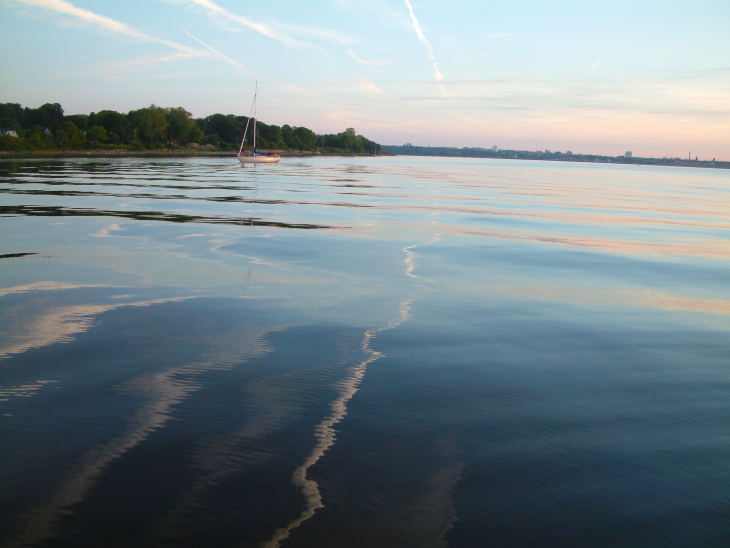Second International Baltic Earth Conference in Denmark
About 130 Earth system scientists from 14 countries and different scientific disciplines will meet for the 2nd Baltic Earth Conference in mid-June in Helsingør, Denmark, to discuss past, current and future environmental transitions which the Baltic Sea region will face in the future.

Coast at the Baltic Sea. Photo: HZG/Marcus Reckermann
The goal of Baltic Earth (www.baltic.earth) is to improve our understanding of the Earth system of the Baltic Sea region, encompassing processes in the atmosphere, on land and in the sea, as well as impacts related to human activity.
So scientists will discuss questions like:
- How and why has the salinity, nutrient, oxygen, carbon and trace gas status of the Baltic Sea changed, and how is it expected to change?
- Can we predict extreme events like droughts and floods better in the future?
- How will the sea level at the Baltic Sea coasts develop?
- How can we incorporate all the different interrelated changes into regional Earth system models, which help us to prepare the right management decisions?
“We need to include all the different important drivers into our models. This makes the models more complex and challenging”, says Prof. Markus Meier from the Leibniz Institute of Baltic Sea Research Warnemünde (IOW), and chairperson of Baltic Earth. Various research groups in the different research institutions and hydro-meteorological services collaborate in this respect. “We need to compare our models to identify their weaknesses and make them better”, adds Dr. Martin Stendel from the Danish Meteorological Institute (DMI), member of the Baltic Earth Science Steering group and local organizer of the conference.
The conference takes place in the transition area between the North Sea and Baltic Sea, which gave the conference its title “The Baltic Sea region in Transition”. “We wanted to reach out to the North Sea region, so we are happy to be in Denmark, as it is situated between the Baltic and North seas, and is influenced by both regions”, says conference organizer Dr. Marcus Reckermann from the International Baltic Earth Secretariat at Helmholtz-Zentrum Geesthacht, Germany (HZG). Another aspect is the high number of young scientists who are at the start of their career: “There will be two self-organized events for young scientists, in which they can network among each other, and also have the opportunity to question two experienced researchers on the trials and tribulations of their careers”, Reckermann adds. The conference is co-organized with the Danish Meteorological Institute, Denmark (DMI), Leibniz Institute of Baltic Sea Research Warnemünde, Germany (IOW), Uppsala University, the Swedish Meteorological and Hydrological Institute (SMHI) and the Merge consortium, Sweden. Baltic Earth conferences take place every two years at different locations in the Baltic Sea region.
Baltic Earth Website
The conference takes place at the Konventum, Gl. Hellebækvej 70, 3000 Helsingør, Denmark, from Monday 11 June until Friday, 15 June 2018.
International Baltic Earth Secretariat at Helmholtz-Zentrum Geesthacht
Phone: +49 (0) 4152 871693
E-mail contactMax-Planck-Straße 1
D-21502 Geesthacht
Germany
Leibniz Institute for Baltic Sea Research Warnemünde (IOW)
Phone: +49 (0) 381 5197 150
E-mail contactSeestrasse 15
D-18119 Rostock
Germany
Danish Meteorological Institute
Phone: +45 3915 7446
E-mail contactLyngbyvej 100,
DK-2100 Copenhagen Ø
Denmark
